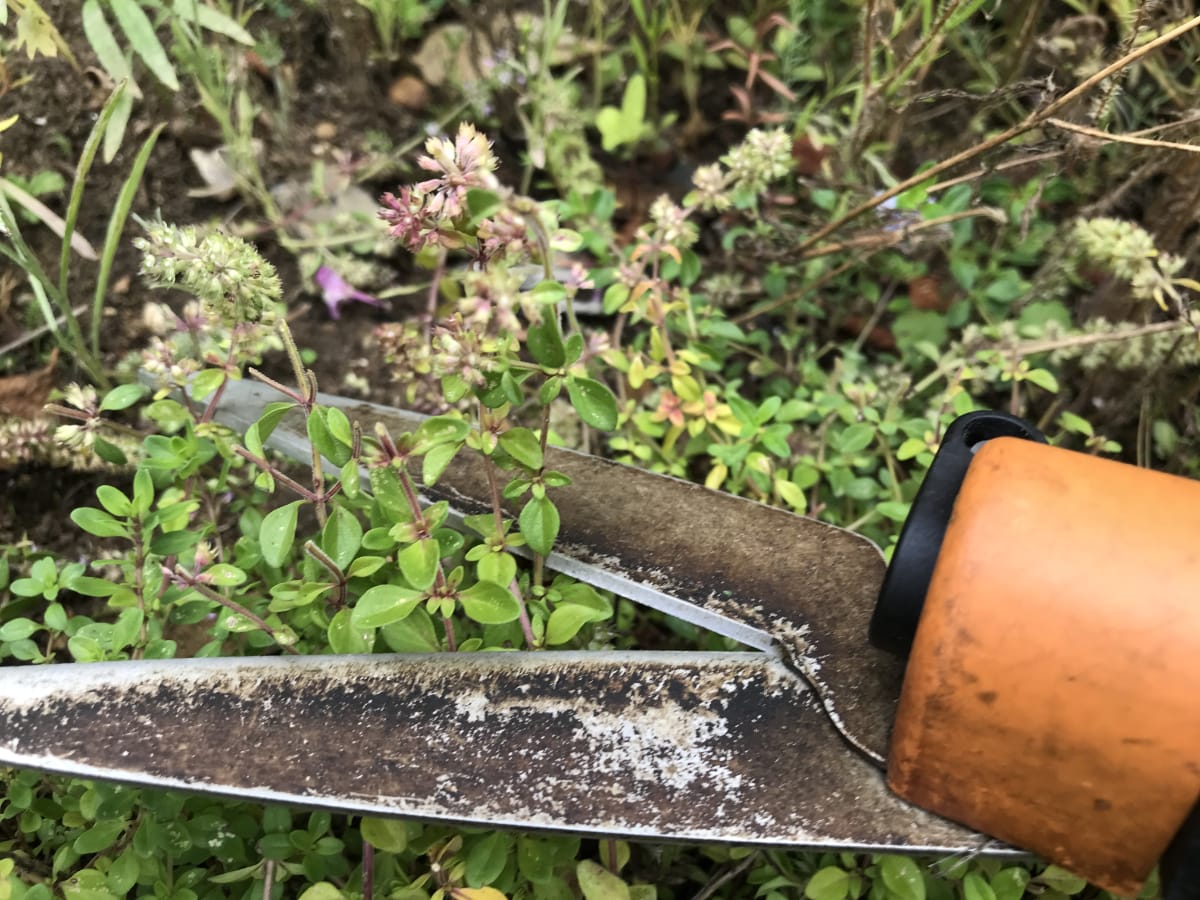Nothing in Basket!
Plant: March - May & September - November
Harvest: All year, but taste best when its sunny
I have planted thyme all over my garden, using it to cover exposed soil, line pathways, and even replace grass. Thyme thrives in my dry, sandy soil, which is also full of stones as the previous owner covered everything in gravel. Throughout the summer my thyme has been covered in flowers and insects, including bees, which has been a joy to see. The garden has gone from being a wildlife desert to a thriving ecosystem, and I am grateful for the role that thyme has played in this transformation.

All you need to know about planting, growing, tending to and harvesting thyme.
Thyme is a versatile herb that is easy to grow and care for. It is perfect for adding flavour to dishes, and it also attracts beneficial insects to the garden.
There are around 200 different thyme varieties to choose from. Leaf colour varies from dark green to golden yellow and variegated, and growth habit can be ground-hugging through to upright. Many thymes produce a mass of white, pink or lilac-coloured flowers over the summer.
Some varieties of thyme work well planted in gravel gardens (Thymus (Coccineus Group) Purple Beauty), cracks in paving or as an alternative to a lawn (thymus serpyllum). Others do best in pots, which can be brought indoors in autumn.
Thyme appreciates a well-drained soil that is low in nutrients. Planting it in full sun will bring the essential oils to the surface of the leaves giving it a greater flavour. It is a drought-loving plant, and may need some protection from cold winds and wet winters. The best time to plant is in spring or autumn. It is well suited to growing in gravel gardens, cracks in paving or at the edge of paths. If you want to grow thyme in a container, use a soil-based compost with plenty of grit added, keep the pot raised off the ground to help drainage.
I've found it is easier to buy thyme ready grown from a garden centre or nursery, then it is to grow them from seed. Then you simply divide them during spring or autumn to make more plants.
Dig a hole a little bigger than the pot, place the thyme in the hole and back fill with soil, and water. Keep watering until the herb is established, but allow it to dry out between each watering.
I space the plants around 12 to 18 inches apart.
Thyme is best planted in spring or autumn. Thyme is not too fussy about soil type, but it will do best in a sandy or loamy soil.

Trim thyme back after it has finished flowering, this will promote new growth. The new leaves will be ready for harvest through the autumn. These plants need to be kept tidy to prevent them from becoming woody, if thyme is left to become woody it will need to be replaced after three years.
Once your thyme has become established it will not need to be watered. If you are growing it in a container, a weekly feed from March to May with liquid seaweed will keep your plant healthy.
As thyme is an evergreen the leaves can be picked all year round. But the best time is, before it flowers, in early summer when the plant is at its most productive.
You can dry thyme, or preserve it in vinegar, oil, or add it to butter.
Thyme is a relatively pest and disease resistant herb. However, it can be susceptible to powdery mildew in humid conditions. The rosemary beetle has also been known to like this herb, but so far I've found they have left mine alone preferring the rosemary bush instead.
Thyme prefers dry conditions. If you live in an area with wet winters, you may want to bring your thyme indoors to protect it from moisture. Do not water your thyme during the winter, and replant it outdoors in the spring.
Here are some additional tips for caring for thyme:
With proper care, thyme can be a long-lived and productive herb.
It is always a good idea to take cuttings or divide plants and bring them inside if they may have trouble surviving winter. Also cuttings can replace old plants that no longer look good, whereas dividing plants re-invigorates them to produce bushy new growth.
Nothing in Basket!
